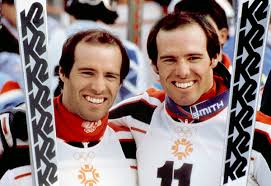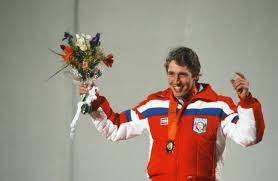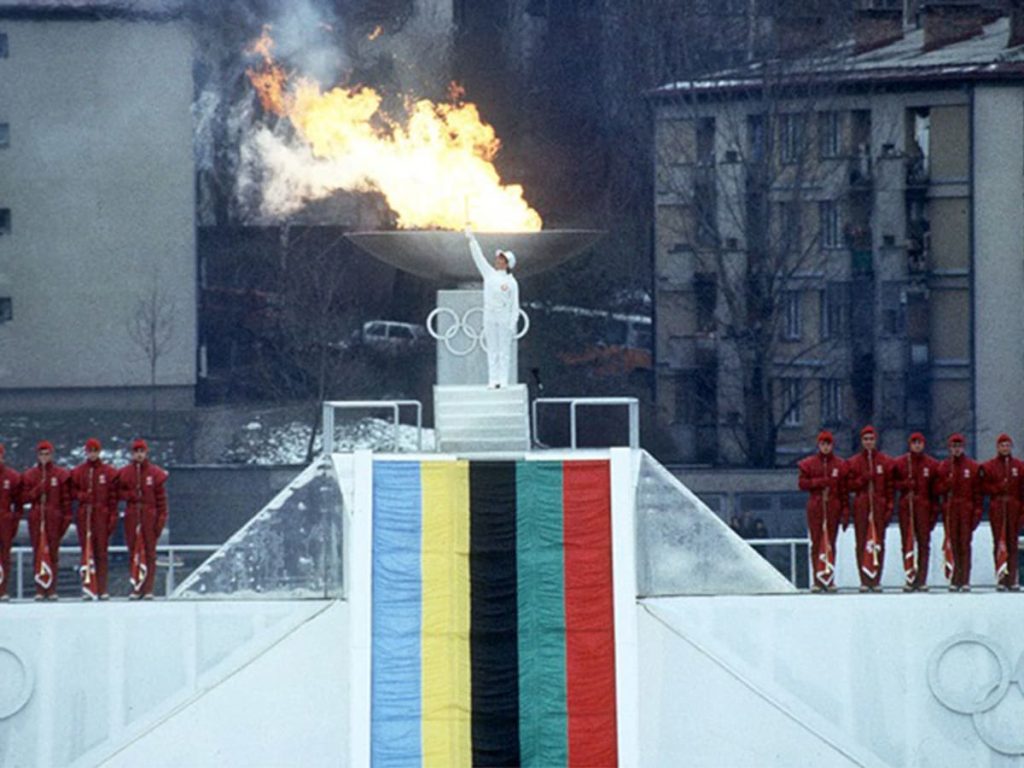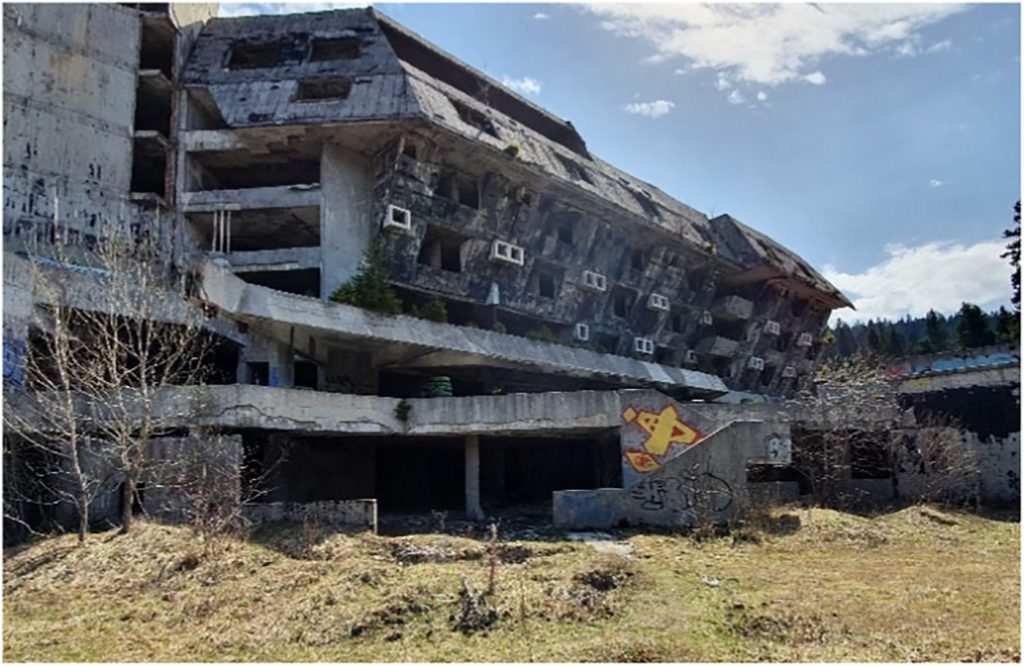A couple of weeks ago a news story caught my attention about the Mahre brothers winning gold and silver in the slalom at the 1984 Olympics. Actually the story was about the celebration of the 40th anniversary of that event held at White Pass ski area in Washington State. White Pass is where the Mahres’ father was the ski area manager, where they learned to ski, and where they still ski today! Hundreds gathered on February 24th to watch Phil and Steve race against each other and even get a chance to race against them.
I had forgotten about the Mahres’ accomplishments at those 1984 Olympics. The 1984 Olympics were the last with only 3 alpine events: slalom, GS and downhill. The 1988 Olympics would add Super G and bring back the combined event. There was some controversy leading up to the games as two double gold medalists from the 1980 Olympics were banned for accepting promotional payments directly and not going through their national teams. They were Hanni Wenzel and Ingemar Stenmark, the dominant skier of that era!
The U.S. alpine team would lead the medal count winning a total of 5 medals. I’ve already mentioned the Mahres with Phil winning slalom gold and Steve winning silver. The American women would accomplish a similar feat winning the gold and silver in the GS.
Deb Armstrong won the GS gold. By the way, Deb Armstrong is producing skiing instruction videos on YouTube these days. They cover beginner to expert segments so if you’re looking for some pointers, you might check them out. Christin Cooper won the silver medal. In a way it was a crowning achievement for her career as she retired from competitive skiing after that season. Christin had finished as high as third in the overall World Cup standings in 1982. Today Christin and her husband former skier Mark Tache run several businesses in Sun Valley, Aspen, and Montana. They also were behind a 2022 film called “Spider Lives” which documents the life of Spider Sabich.
The fifth American medal was the downhill gold won by Bill Johnson. It made Johnson the first U.S. man to win a gold medal in downhill. Johnson was a brash young skier (23 years old) who burst on the scene. He served notice before the Olympics by winning the Lauberhorn in January 1984. He was an excellent glider and the Olympic downhill course favored gliding more than technical execution. Johnson boldly predicted his win which angered the Europeans. But he made his prediction come true! Johnson would win two more World Cup downhills in the remainder of the 1984 season.
During the following two seasons Johnson’s results were less spectacular. An injury requiring surgery led to him being left off the 1988 Olympic team and by the end of that season he was dropped from the U.S. Ski Team.
Johnson would try to resurrect his career at age 40 for the 2002 Salt Lake City Olympics. His comeback ended with a serious crash during training runs for the 2001 U.S. Alpine Championships. His injuries included brain damage that left him in a coma for three weeks. Johnson never recovered from those injuries eventually requiring long term care. He passed away in January 2016.
So where were those 1984 winter Olympics held? That would be Sarajevo which in 1984 was part of Yugoslavia. Back in 1914 Sarajevo was part of Bosnia-Herzegovina and was where a Bosnian Serb assassinated Archduke Franz Ferdinand of Austria triggering World War I. Bosnia-Herzegovina was absorbed along with other small republics into Yugoslavia. After the breakup of the Soviet Union, Yugoslavia went through a similar period. Bosnia-Herzegovina declared its independence in 1992, but Bosnian Serb militants besieged Sarajevo to protect their interests. That military siege would last until 1995 and result in almost 12.000 deaths including 1500 children. It also destroyed much of Sarajevo’s infrastructure including the Olympics facilities.
The Dayton Agreement signed in 1995 ended hostilities and Sarajevo is now part of Bosnia-Herzegovina. The city has been rebuilt including some of the Olympics facilities. The Sarajevo cable car which was a landmark of the 1984 Olympics was completely destroyed during the siege, but was rebuilt and opened in 2018.





Leave a Reply